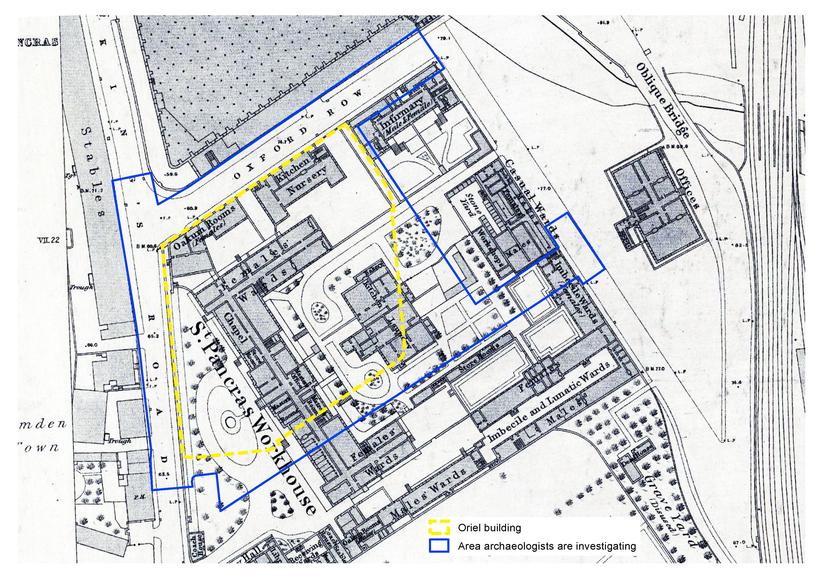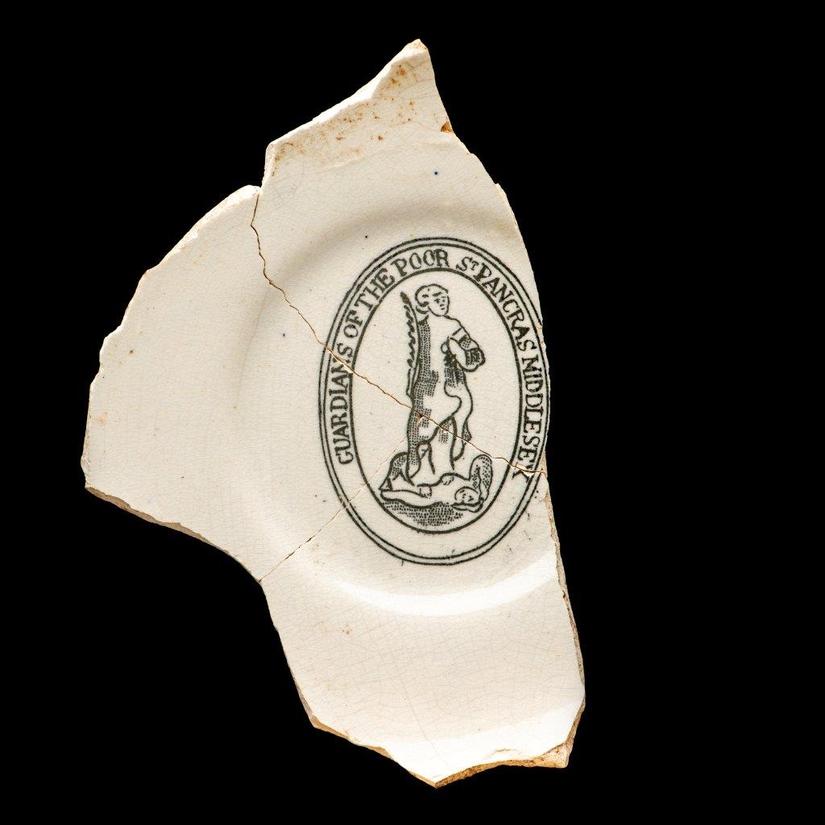Bringing the past into focus on the Oriel site
The trowels are out and we’ve started excavating the foundations of a 19th century workhouse on a two-acre area in St Pancras, Camden. As part of the planning consent obligations for Oriel – a new state-of-the-art eye care, research and education centre - we are excavating the site to uncover more about the history of the area.
Oriel is a joint initiative between Moorfields Eye Hospital NHS Foundation Trust, the UCL Institute of Ophthalmology (IoO) and Moorfields Eye Charity. Construction of the centre will begin later this year with the building opening in 2027.
The two-acre site owned by Oriel is part of a wider five-acre area known as the St Pancras Hospital site. The remaining three acres still contains former workhouse buildings which today form part of Camden and Islington NHS Foundation Trust (C&I).
So, what can we expect to find underground? Well, on the Oriel site none of the original buildings survived into the 21st century. Not only that, but it has a surprisingly rich and colourful history.
People first started living in this area over 1,500 years ago, in a settlement next to the modern-day Church of St Pancras. The church, which gives St Pancras hospital its name, is thought to have been founded all the way back in the 4th century! For centuries since, this landscape was mainly fields and villages.
That was, up until the 1700s. With the arrival of the Industrial Revolution, London rapidly expanded as more people came to live and work in the capital. By the late 1700s this area of Camden was the suburbs and was quickly growing as people tried to escape the cramped centre of London.
Supporting the poor and sick
The story of the entire St Pancras hospital site really begins with the construction of a workhouse in 1809. Two other workhouses for the local population had been set up before this, but both were quickly overcrowded and fell into disrepair. The workhouse built here was designed to accommodate 500 people, and a significant portion of these original buildings lie under the Oriel site.
Workhouses were supposed to support people who couldn’t earn enough to feed and look after themselves and their families. However, they were specifically designed to make sure people were not taking advantage of the state. As the name suggests, in return for free meals and a place to sleep, people living in the workhouse had to work. They often ended up doing repetitive tasks or hard labour.
Just three years after this workhouse opened, an infirmary was added. This infirmary provided free healthcare to workhouse residents, and people have been treated at this site ever since. Before the NHS was created in 1948, people had to pay for their medical care, so this was a crucial source of support for poor people in the area.

As the population of Camden continued to grow in the 1800s, so did the population of the workhouse. By 1857, the number of residents varied between 1,500 to nearly 1,900. Another infirmary was added in 1849, and an extension to the rest of the workhouse was built in 1880.
The workhouse continued to house people up until 1929 when the Local Government Act allowed the buildings to be turned into a hospital.
What will we find underground?
While some workhouse buildings are still standing nearby, the Oriel site buildings did not survive into the 21st century.
During World War Two, some of the buildings were damaged by bombing raids, and they were later demolished. These are the workhouse foundations we are currently excavating on the Oriel site. Other buildings were also replaced or removed as the workhouse and later hospital developed. We are therefore expecting to find the ground floor and foundations of these buildings, and any objects left behind within them.

We’ve already found some items left behind or disposed of - evocative reminders of the lives of the workhouse residents. This includes plates stamped with ‘GUARDIANS OF THE POOR ST PANCRAS MIDDLESEX’, officially branded crockery provided by the institution.
Over the coming months we’ll update you as we excavate and investigate the archaeology under this site. We’ll share our discoveries and learnings about what life was like here. There is so much more waiting to be discovered!